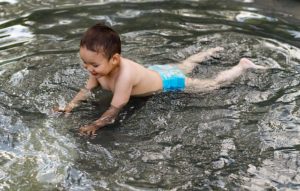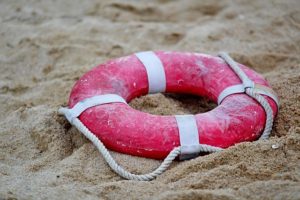
Swimming can be a delightful way to cool down when the summer heat gets unbearable. Plus, it provides great exercise and can be an excellent way for families and friends to socialize. However, one cannot stress too much the importance of pool safety when it comes to gearing up for your summertime swims. Whether you are hosting a backyard pool party, taking your children on a trip to the lake, or considering using the pool as a place to escape for your own few moments of relaxation, pool safety should be at the top of your list of things to contemplate.
Pool safety for toddlers and children

When it comes to toddlers, any parent will tell you that you cannot turn your back for even a moment. Add a swimming pool into that equation and the time you can afford to withdraw your attention is less than a second.
If you’re near a swimming pool, pool safety for toddlers starts with ensuring you don’t take your eyes off of the child for even a second. That’s according to Parents.com because the most likely place for toddlers to drown is in a swimming pool. For babies, bathtubs are the most likely danger, and older children are more statistically at risk around oceans, lakes and other bodies of water.

But pool safety is not just for full-size swimming pools. The same dangers apply if you leave a kiddie pool filled with water in your yard. Pool safety applies to all standing water. Even if the child is old enough to stand up out of the shallow water, professionals on Parents.com warn when it comes to pool safety if a child inhales a mouthful of water, they might panic and not know what to do.
If you have a swimming pool, you should always fence it in. Having more than one safety mechanism on the fence — including self-closing gates and multiple latching devices higher than children can reach. Keep gates locked when you are not in the pool area with the children.
Other tips for this age group include:
- Don’t rely on floatation devices. Keep children within “touch distance” at all times.
- Invest in rescue gear. Have a long pole with a hook on the end, a life preserver and a phone near the pool.

Pool safety device should be close to the swimming area. - As a parent, taking swimming and CPR classes for yourself. This pool safety tip helps remind parents of the signs of drowning, and what to do to keep the worst from happening.
-
People with backyard pools should make sure to have an alarm on the exterior house door leading to the pool area, to alert parents when that door is opened.
-
com suggests installing an underwater motion swimming pool alarm that will detect motion under the water for greater pool safety.
-
If a child is missing, check the water first. Seconds count when it comes to pool safety.
But all the pool safety gadgets in the world can only serve as a backup to parental vigilance. According to Webmd.com, the vast majority of drownings (69%) occurred when one or both parents were responsible for child supervision. Another 10% while another adult was responsible, 14% while babysitters were supervising and 7% when siblings were looking out for pool safety. In other words, it can happen to anyone, so being vigilant, but also having several technological and other backups is the best way to keep your children safe.

Why not just teach them to swim?
Teaching a child to swim is another excellent pool safety precaution to take. But even if a child knows how to swim, young children particularly may not be able to swim well enough or long enough to get to the edge of the pool. And they may not be strong enough to pull themselves out of the pool.
Consequently, for greater pool safety, members of the Life Saving Association suggest insisting that children wear Coast Guard-approved life jackets whenever the swimming pool is being used.
Another idea is to hire a lifeguard when hosting a party. So many things are going on at a party, it’s a good idea to have someone there specifically to focus on pool safety, in addition to the parents, just to make sure nothing happens.
Pool safety for adults
It’s not just the children who need to be aware of pool safety. Although people often think adults will be fine swimming, however, statistics show adults should also be vigilant when it comes to pool safety.
Suggestions for staying safe around the water include:
- Never swim alone. This is true for backyard pools as well as open bodies of water. It’s smarter, and more pool safety, to swim with a buddy.
- Make sure the body of water matches your ability to swim. Swimming in a lake or ocean is much different than swimming in a backyard pool.
- Don’t swim in areas not supervised by a lifeguard.
- Never dive into shallow water.
- Drink plenty of water. Despite being surrounded by water when swimming, the body is apt to dehydrate. It is also wise to avoid drinks with alcohol or caffeine while swimming.
- Remember pool safety includes taking care of your skin. Use sunscreen with at least SPF 15, especially from 10 a.m. to 4 p.m.
With all the warnings about pool safety, remember swimming pools and other bodies of water can be great fun. Vigilance, extra precautions and proper training are key in order to ensure your swim time doesn’t turn from terrific into tragic.
Looking for homes where the weather is just right for pool time? There are many homes available in Southern Utah. Check out these listing for St. George, Utah.

